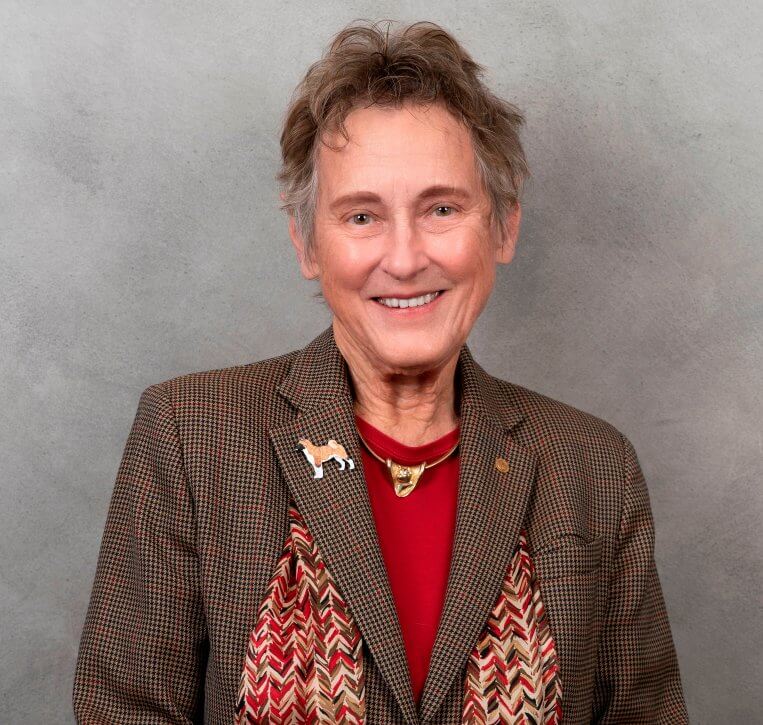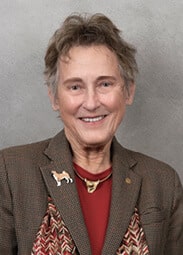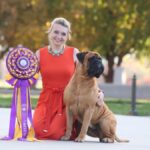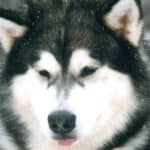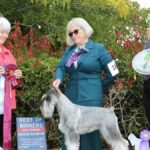Interview with Working Group Judge Rita J. Biddle, Esq.
- AKC Judge: BIS, Hound, Working, Non-Sporting Groups, 1/2 Herding Group, Junior Showmanship. Have judged all over the US and abroad;
- Active Exhibitor, 1965-Present, Conformation, Obedience, Rally. Teach Conformation Classes;
- Akita Breeder (BOM) 1983-Present; Great Danes, 1965-1997;
- Life Member, Ingham County Kennel Club (Lansing, Michigan); Officer/Dog Show Committee Positions and Club Delegate to the AKC;
- Member: Akita Club of America and United States Neapolitan Mastiff Club (Past Officer Positions in Both, including President); Michigan Hound Association; Great Lakes Working Dog Group Association; and Morris and Essex Kennel Club;
- Director, American Kennel Club; Chair, AKC Reunite (Disaster Relief, Microchip Services, Lost Dog Recovery);
- Career: Retired after 40-plus Years in Public Service, 13 as Top-Level Executive in State/Regional Government (Medicaid Finance, Medicaid/Welfare Fraud, and Criminal Justice). Also, Owned/Operated Successful, Large, Full-Service Boarding Kennel;
- Education: Graduate Degrees and JD, Cum Laude.
Where do I live? How many years in dogs? How many years as a judge?
Rita J Biddle: I live in Eagle, Michigan, in the country west of Lansing. I’ve been in dogs since 1965 and have been judging since 1995. Prior to being approved as an AKC judge, I judged many rare breed shows.
What is my original breed? What is/was my kennel name?
Rita J. Biddle: My original breed is the Great Dane, 1965-1997, when my last Dane passed, and Akitas, 1983 to present. My kennel name is O’Ryan.
Can I list a few of the notable dogs I’ve bred? Any performance or parent club titles?
Rita J Biddle: I am not a prolific breeder, but all of my dogs that I’ve kept have finished their championships, as have many that I sold to others. One of my Danes, CH Merrimac Trinity of Ryan, did very well in the late 1970s/early ‘80s when it took 50-plus bitches for a 5-point major. One of my Akitas, GCH O’Ryan’s One More Time, “Quinn,” was one of the first Akitas to earn a Grand Championship, and was #6 in Breed points in 2010. Another one that did well was GCHB Avalon O’Ryan’s Fire Brewed, “Ozai.” He was co-owned by Dawn Hubbard. Ozai had several Group placements and was a Top 10 Akita in 2020. He crossed the Bridge before his time (August 2020). I am now down to one Akita, GCH O’Ryan Avalon’s Hide Your Heart Girls, CGC, CD, BN, “Eli,” who is also co-owned by Dawn. Eli has retired from the Conformation ring and is now working on various Obedience and Rally titles.
What are the qualities I most admire in the Working breeds?
Rita J Biddle: I admire the intelligence and loyalty of the Working Dogs. While they generally want to please you, they expect you to bring something to the bargain. You have to earn their respect. They want to know where you are and be with you, but they are not “velcro” dogs. They seem to see into your soul.
Have I judged any Working Group Specialties?
Rita J Biddle: Yes: Akitas (National Specialties), Great Danes (Top 20 and many Regional Specialties), Neapolitan Mastiffs (National Specialty and Regional Specialties), and Regional Specialties in Boxers, Portuguese Water Dogs, Samoyeds, Doberman Pinschers, and Bullmastiffs, and the Groups in the St. Croix Valley Combined Specialties.
Do I find that size, proportion, and substance are correct in most Working breeds?
Rita J Biddle: Generally speaking, yes. However, some breeds have gotten too big while others have lost substance. It is important for breeders to remember, when making breeding decisions, what their breed was bred to do, instead of simply breeding to the big winner of the day, the “stud du jour.” Also, one must breed not only for type, but also for soundness, balance, and correct movement. With regard to proportion, I think it is sometimes difficult to understand “square” if you come from a breed that isn’t square. The bottom line is, “form follows function.”
Is breed-specific presentation important to me as a judge? Can I offer some examples?
Rita J Biddle: Breed-specific presentation is vital to a judge’s learning about a breed. For example, in toplines, what does level mean versus slight rise over the loin? What is the difference between square, off-square, and rectangular? Think of the differences in the Cane Corso, Bullmastiff, and Neapolitan Mastiff. Presenters must be able to explain the nuances of a breed in a way that the student understands and can actually see. Hands-on touching and feeling is very essential to the learning process. Often, one’s hands tell you more than a visual encounter.
What are my thoughts on cropping/docking the Working breeds?
Rita J Biddle: Cropping and docking were put into standards by parent clubs for reasons related to function. However, many parent clubs have backed away from making uncropped and/or undocked a DQ, stating instead that they are preferences. While some find this position to be bowing to the animal rights movement, as judges, we must follow the standard. In this case, uncropped and/or undocked should be seen as a deviation and judged to the degree that it detracts from the overall quality of the dog.
Are the Working breeds in good shape overall? Any concerns?
Rita J Biddle: I think the Working breeds are in good shape overall. It is vital that breeders, owners, and judges all keep the breed standard in mind and work to breed, show, and judge dogs according to the requirements of the standard; typey, healthy, sound, and correct-moving dogs.
In my opinion, how do today’s exhibits compare with the Working Dogs of the past?
Rita J Biddle: Today’s exhibits, in general, compare favorably to the Working Dogs of the past. However, many are over-groomed; sculpted, sprayed, teased, shaved, dyed, and on and on—not good.
Why do I think the Working breeds are so admired as family companions?
Rita J Biddle: Many find that the Working Dog’s intelligence, affection, trainability, size, and their desire to please and protect make them very suitable for their role as family companions.
Just for laughs, do I have a funny story I can share about my experiences judging the Working Group?
Rita J Biddle: One time, while judging the Group, an exhibitor lost control of the lead as the dogs were going around the ring together. The dog never missed a step, and when they all stopped, it stepped into a perfect stack. The exhibitor did catch up to the dog… and all was well.


